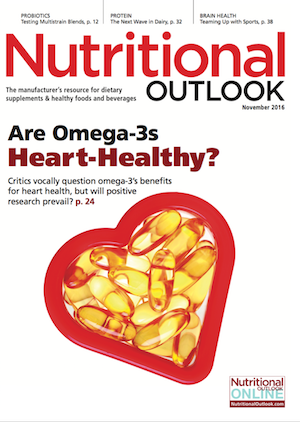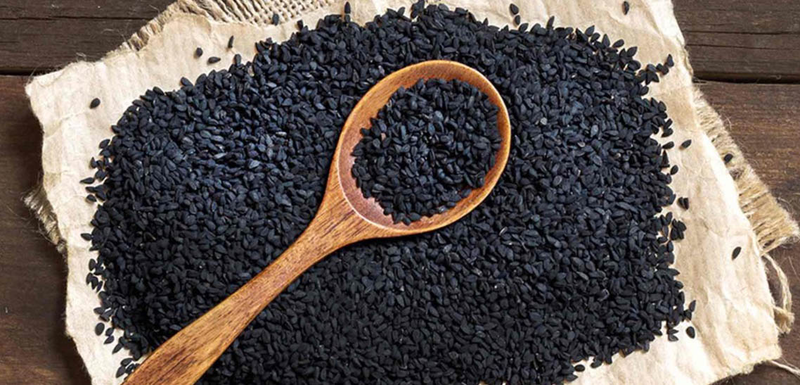FDA’s “No Synthetics” NDI Provision Is a Selling Point for Natural-Botanical Firms
At SupplySide West, natural-botanical suppliers underlined the fact that FDA’s NDI draft guidance does not consider synthetic botanical ingredients to be dietary ingredients.
Photo © iStockphoto.com/mustafa deliormanli

FDA’s August-revised new dietary ingredient (NDI) draft guidance is still fresh out the gate and currently under review by the dietary supplements industry. At October’s SupplySide West trade show, it was evident to me that the guidance is especially top of mind for suppliers of natural botanical ingredients, many of whom are now leveraging, as a selling point, the guidance’s stance barring synthetic botanicals as dietary ingredients.
The revised draft guidance states that, “Under a plain reading of the FD&C Act, a synthetic copy of an herb or other botanical does not qualify as a dietary ingredient under section 201(ff)(1)(C) of the FD&C Act. As defined in the glossary, an herb or botanical includes only plants, algae, fungi, their exudates (secretions, such as sap or resin), and their physical parts. A substance that has been synthesized in a laboratory or factory has never been part of an herb or other botanical and, therefore, is not a dietary ingredient under section 201(ff)(1)(C) of the FD&C Act.”
At SupplySide West, a number of firms I interviewed not only said that their natural ingredients were preferable to synthetic ones but also made a point of underlining the fact that FDA’s NDI draft guidance does not consider synthetic botanical ingredients to be dietary ingredients.
For instance, in discussing the growing problem of natural curcumin being spiked with synthetic curcumin, Anurag Pande, PhD, vice president of scientific affairs for curcumin supplier Sabinsa (East Windsor, NJ), told me that, “[Synthetic] curcumin can cause serious risks to health, and it is also illegal as per FDA’s [new dietary ingredient] guidance documents and [the agency’s] longstanding position that a synthetic is not the same as a botanical.”
Natural-astaxanthin suppliers, too, mentioned the NDI draft guidance as they highlighted the differences between natural and synthetic astaxanthin. Joe Kuncewitch, national sales manager for natural-astaxanthin supplier AstaReal (Burlington, NJ), said, “Synthetic astaxanthin seems to fall under a gray area-that is, the jury is out as to whether it meets the criteria of being a dietary supplement ingredient within the scope of filing an NDI notification. It has approval for being a pigment in fish feed, but we’ve yet to see NDI notification for synthetic astaxanthin for human use in dietary supplements.”
These comments were striking to me because they exemplified how the NDI guidance serves as a selling tool for firms looking to contrast their ingredients with the competition. Here, I'm addressing the subject of synthetics-versus-natural strictly from a regulatory and marketing point of view. Kuncewitch, for instance, questioned whether synthetic-astaxanthin suppliers would be able to attain NDI status at all. “Could they get the NDI?” he asked. “This is the $64,000 question that may need to be answered.”
For the record, not all synthetic-ingredient firms believe they need an NDI notification. Astaxanthin supplier DSM Nutritional Products (Parsippany, NJ), for instance, has for years maintained its position that the company’s AstaSana nature-identical astaxanthin does not need an NDI notification in order to be used in dietary supplements.
First, the firm says, AstaSana has self-affirmed GRAS affirmation (with plans to notify FDA, it added) at a dosage of up to 6 mg/day. FDA’s NDI guidance says that if an ingredient has GRAS standing, firms may be able to bypass NDI notification in order to use the ingredient in a dietary supplement. Secondly, DSM says that AstaSana is an approved color additive that has long been present in the food supply, and as part of the food supply, it qualifies for the FDA exemption that states that an NDI notification is not required if an ingredient “has been present in the food supply as an article used for food.” (AstaSana is fed to farmed fish, such as salmon, in order to impart a pink color. That fish is then eaten by humans and therefore, DSM says, enters the food supply.) Finally, the NDI draft guidance provides another possible exemption, stating that “a synthetic copy of a botanical ingredient may qualify as a dietary ingredient under section 201(ff)(1)(E) if the synthetic copy has been used as a lawfully marketed ingredient in the conventional food supply”-which, again, DSM argues AstaSana has been.
As such, Hugh Welsh, president of DSM North America, told me, “DSM does not plan to submit an NDI notification.” Moreover, he said, “DSM is not concerned about the comments regarding synthetic botanicals not being considered as dietary ingredients under section 201(ff)(1)(B)."
Still, in cases when natural ingredients compete with synthetic ingredients, I would expect to see more natural-ingredient firms striking a market position by embracing the NDI draft guidance’s “no synthetics” provision, if they haven't already been doing so.
The subject of synthetic ingredients is always a controversial one in the natural products industry. On one hand, no one can deny that synthetic ingredients give people who lack access to adequate nutrition the ability to obtain critical, supplemental nutrients at a low price. But, from a marketing perspective, it will be interesting to see whether the NDI draft guidance becomes a point of contention between firms that make natural ingredients and firms that do not.
Also read:
Natural Versus Synthetic Ingredient Debate
Astaxanthin Suppliers Unite to Promote Natural over Synthetic Forms
Jennifer Grebow
Editor-in-Chief
Nutritional Outlook magazine
jennifer.grebow@ubm.com

Prinova acquires Aplinova to further increase its footprint in Latin America
April 7th 2025Prinova has recently announced the acquisition of Brazilian ingredients distributor Aplinova, which is a provider of specialty ingredients for a range of market segments that include food, beverage, supplements, and personal care.






















